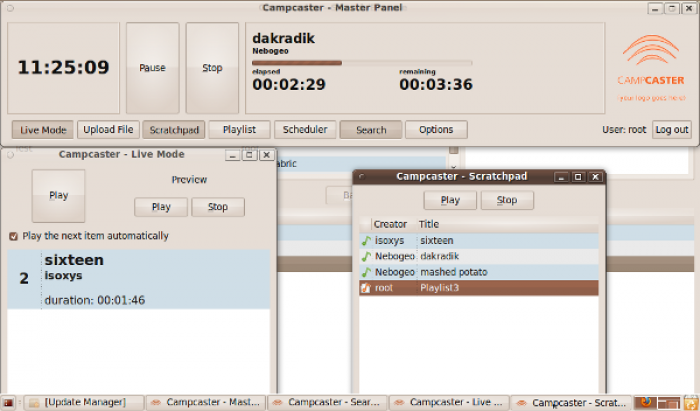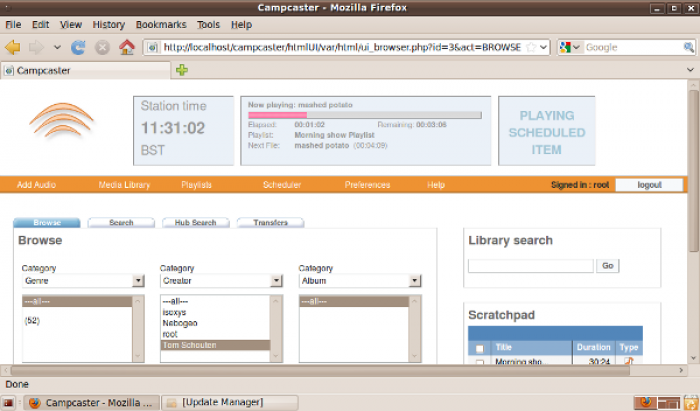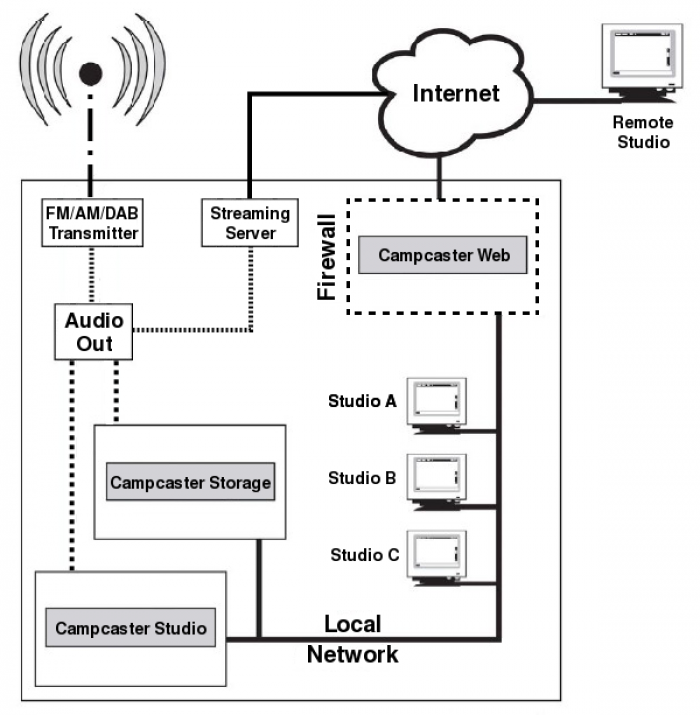Workshop No. 1 MAKING WAVES – documentation
Workshop No. 1 MAKING WAVES – documentation
Workshop No. 1 MAKING WAVES, hosted by Sourcefabric, took place on Saturday 23 October 2010, 10:00am at Direktorenhaus, as part of the ON2 Festival "Test Signals".
Workshop Description:
MAKING WAVES allows participants to learn the first steps of operating a radio station, including scheduling, live studio broadcasts, play-outs and even remote automation and networking via the web, all using free software. The workshop will take participants through hardware set-ups, software installations and studio configurations, resulting in the creation of a fully-functioning radio station.
The workshop was particularly aimed at freelance journalists, media artists, creative practitioners, open source enthusiasts and web programmers who are looking to find new ways to organise, distribute and broadcast their media content using open source software. The MAKING WAVES workshop was open to anybody working in the above mentioned fields. We had more than 20 participants from all over the world, mostly radio professionals but also sound artists and other people who were simply interested in using the possibilities of open radio for their own cultural practice. The workshop was led by Daniel James.
More infos about out workshop hosts:
> sourcefabric.org
> testsignals.org
The workshop was based on Sourcefabric’s CAMPCASTER software. Here you can find a perfect documentation on how to install and use this open source software: http://en.flossmanuals.net/Campcaster/Introduction
Campcaster is a suite of Open Source broadcast management software running on the GNU/Linux platform, providing both live studio capabilities and remote-controlled automation in one integrated system. The scalability of Campcaster allows implementation in a number of scenarios, ranging from an unmanned broadcast unit accessed remotely through the Internet, to a local network of Campcaster machines accessing a central storage system. Campcaster supports the playout of audio files in both the widely used MP3 format and the open equivalent Ogg Vorbis (http://www.vorbis.com).
Multilinguality is a central feature in Campcaster: virtually everything in the user interfaces can be translated into any language using Unicode. Multilinguality is implemented in all levels of the user interfaces, as well as for the metadata for audio files in the storage system.
You can visit the the Campcaster online support forum, and sign up for the mailing list, at http://forum.sourcefabric.org/index.php/f/14/.
For those of you who would like to know how to set up and operate a radio station on your own, we recommend a great online tutorial for community radios:
http://cr-userguide.web4all.in/index.php/Chapter_2:_Technology_I:_Setting_up_a_studio_space
The wiki Community Radio – a user’s guide to the technology features a very comprehensive guide to setting up a community radio station. The guide was originally aimed at setting up a community radio station in India, but includes a lot of practical advice that is equally useful in any country. The manual taking you through all the steps of setting up a studio space, designing the stations, studio equipment, field record equipment, as well as planning for maintenance & management.
Finally, we would like to recommend reading the Linux journal on “Running a net radio station with Open Source software”: http://www.linuxjournal.com/article/4397
And here you can find some of the videos of the ON2: Test Signals Conference on Open Radio:
The Federal Government’s Centre of Excellence for the Cultural and Creative Industries
Mediapartner:
Motor FM


